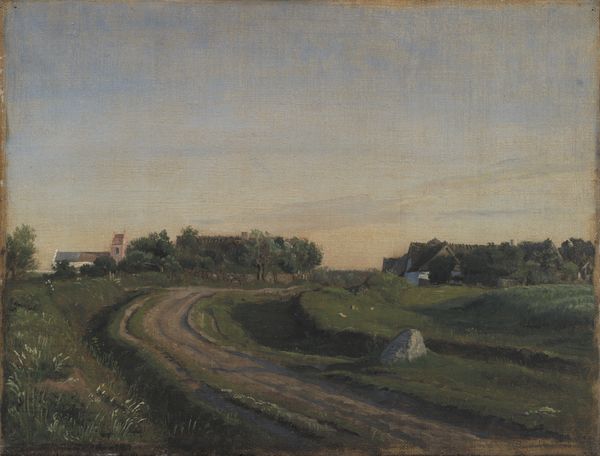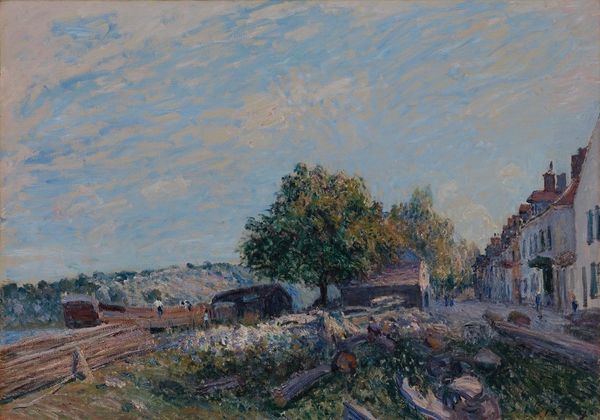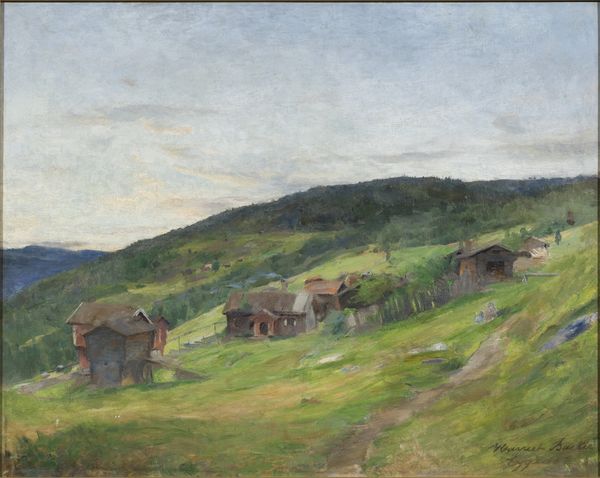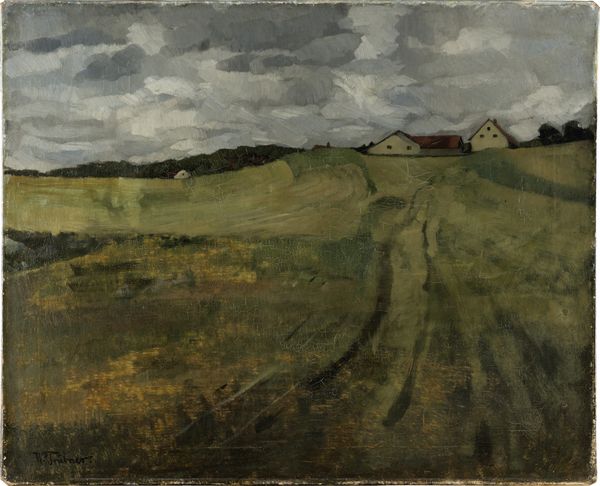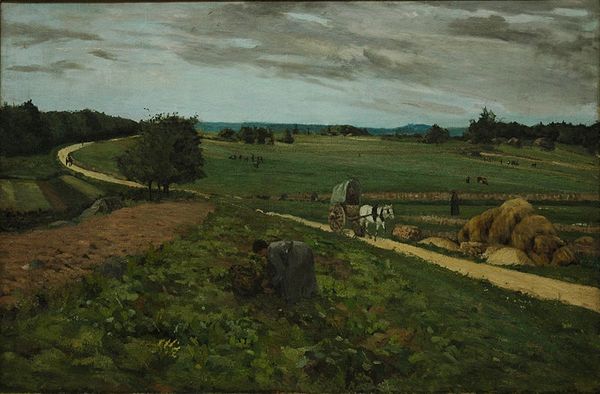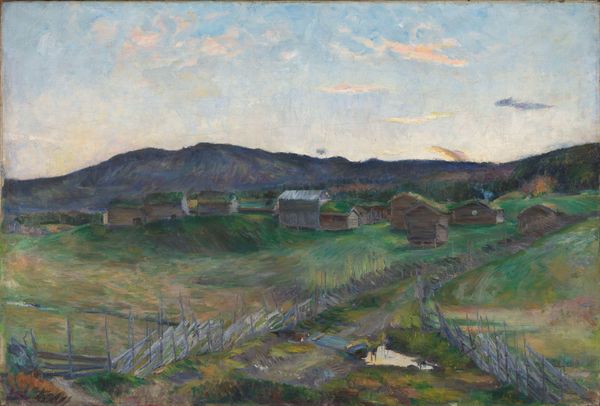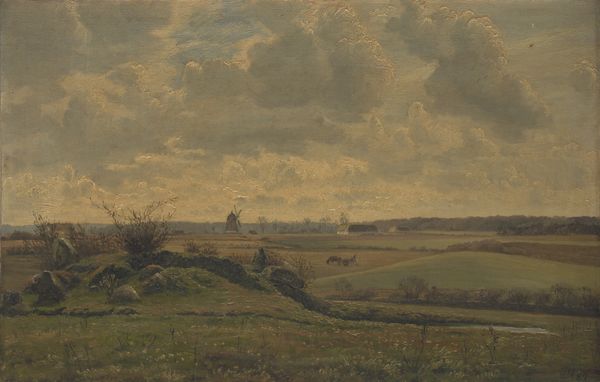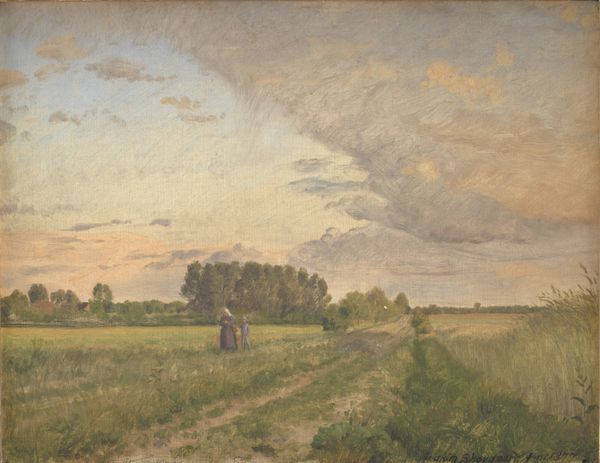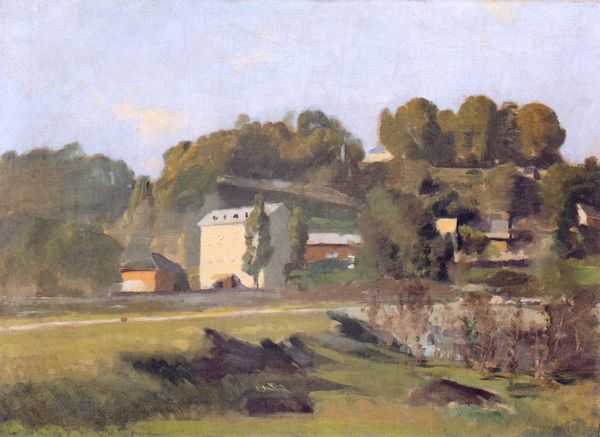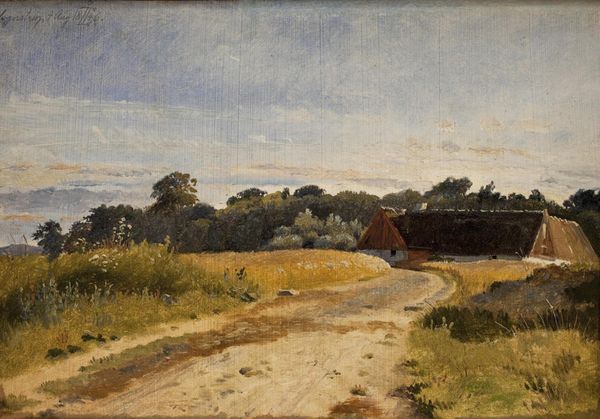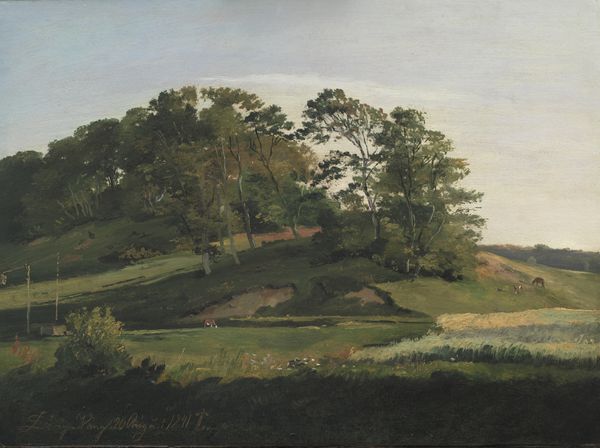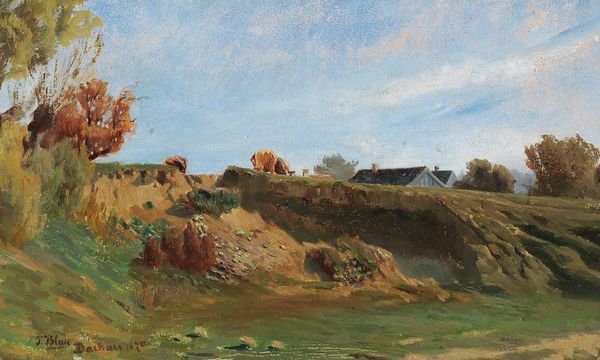
Landscape near Vejby seen from the North. Afternoon Light 1843
0:00
0:00
painting, plein-air, oil-paint
#
painting
#
plein-air
#
oil-paint
#
landscape
#
oil painting
#
romanticism
#
realism
Dimensions: 20.3 cm (height) x 30.6 cm (width) (Netto), 26.9 cm (height) x 36.8 cm (width) x 2.1 cm (depth) (Brutto)
Editor: This is "Landscape near Vejby seen from the North. Afternoon Light" by Johan Thomas Lundbye, painted in 1843 using oil paints. I’m struck by how quiet and peaceful it feels. It’s such a simple scene, but the light makes it so evocative. What do you see in this piece? Curator: I see a landscape steeped in cultural memory. The large stone in the foreground immediately grabs my attention. Doesn’t it seem almost deliberately placed? I wonder if it is meant to evoke ancient burial sites or other historical markers dotting the Danish countryside? These forms would have been loaded with meaning for viewers in the 19th century. Editor: That's a perspective I hadn't considered. I was just thinking about the realistic depiction of the Danish landscape. Curator: Precisely. But realism, especially in Romantic painting, often served to connect the present with a romanticized past. The placement of that boulder, against the backdrop of the rural buildings, creates a visual dialogue. Can you sense the symbolic weight the artist invests into his vision of "home"? Lundbye isn't just painting a picture; he’s also painting a feeling, a collective history. Does the sky remind you of something? Editor: Now that you mention it, the way the clouds stretch so thin does add a somber quality. Almost as though a memory is trying to pierce the surface. Curator: Indeed! Consider how this connects with Denmark's burgeoning national identity in the 19th century. Landscapes weren’t just scenery; they were vessels carrying a sense of shared history and cultural continuity. What do you take away from how the foreground blends into the middle ground, for example? Editor: I appreciate seeing this ordinary scene elevated. Now it resonates on a more profound, historical level, giving visual weight to cultural identity. Curator: Absolutely. Art can serve as an emotional and visual compass, orienting us in relation to the landscape that defines a nation and the historical echoes that shape it.
Comments
No comments
Be the first to comment and join the conversation on the ultimate creative platform.
